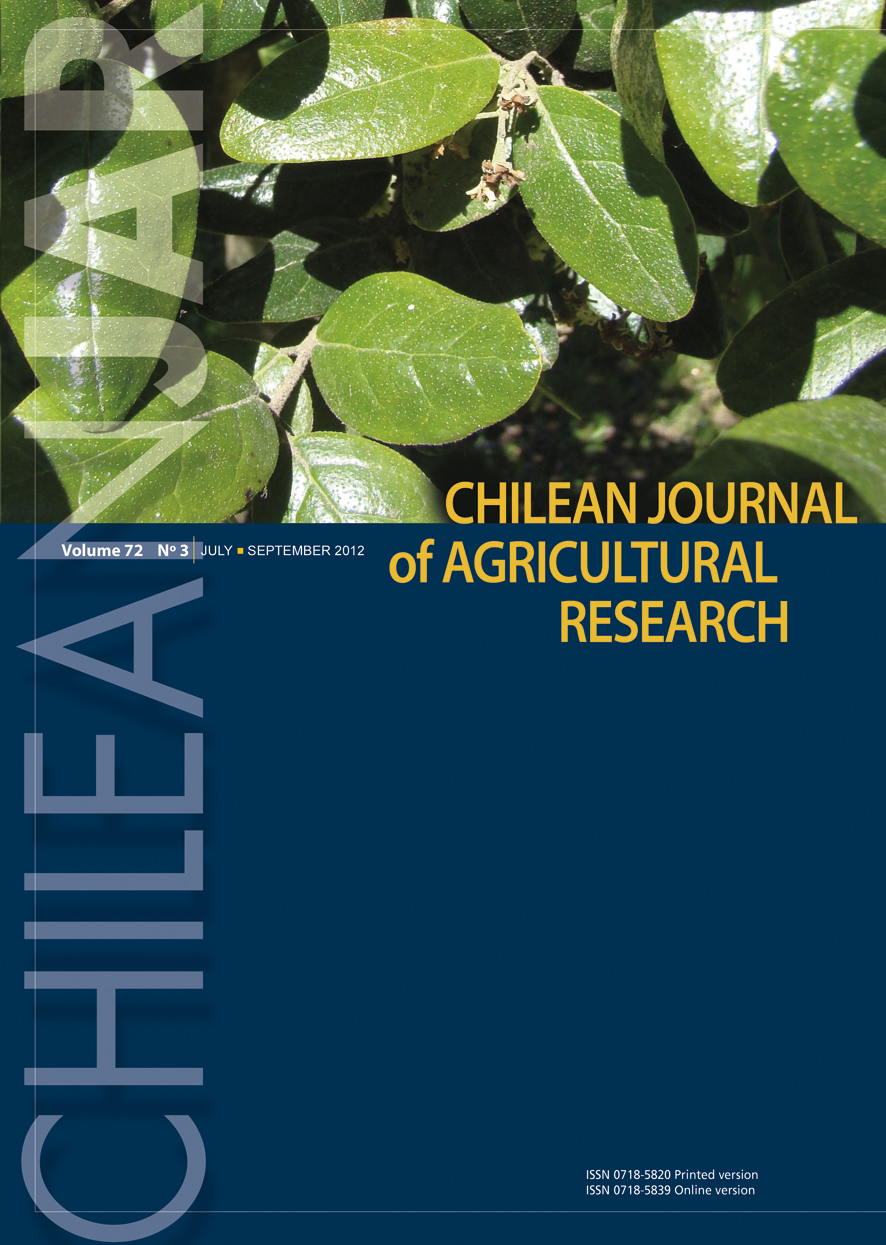
|
Chilean Journal of Agricultural Research
Instituto de Investigaciones Agropecuarias, INIA
ISSN: 0718-5820
EISSN: 0718-5820
Vol. 70, No. 4, 2010, pp. 633-639
|
 Bioline Code: cj10071
Bioline Code: cj10071
Full paper language: English
Document type: Research Article
Document available free of charge
|
|
|
Chilean Journal of Agricultural Research, Vol. 70, No. 4, 2010, pp. 633-639
| en |
Cocoa Bean (Theobroma cacao L.) Drying Kinetics
Chinenye, Ndukwu MacManus; Ogunlowo, A.S. & Olukunle, O.J.
Abstract
Cocoa (Theobroma cacao L.) is widely produced in West Africa and South America and is a great economic tree crop, with so many industrial uses. In this work, the experimental drying kinetics of foreign species was investigated, and the experiments were carried out under isothermal conditions, using heated batch drier at 55, 70 and 81 °C. The moisture ratio data obtained from change of moisture content with the drying time was fit to two thin layer drying model with good results. A faster drying process was observed at a higher drying temperature resulting in higher drying rates which is advantageous when evaluating costs. Fick’s second law of diffusion was used to predict effective diffusivity using experimental data assuming that the variation of diffusivity with temperature can be expressed by an Arrhenius type function, and the values of diffusivity obtained ranged from 6.137 x 10-10 to 2.1855 x 10-9 m2s-1 for the temperature used. The Arrhenius constant (D) is predicted at 8.64 x 10-4 m2s-1 while the activation energy was predicted at 39.94 kJ mol-1.
Keywords
Moisture content, drying temperature, diffusivity, moisture ratio, equilibrium moisture content.
|
| |
| es |
Cinética del Secado de Cocoa (Theobroma cacao L.).
Chinenye, Ndukwu MacManus; Ogunlowo, A.S. & Olukunle, O.J.
Resumen
El cacao (Theobroma cacao L.) es ampliamente producido en el Oeste de África y Sudamérica y es un cultivo de gran importancia económica, con muchos usos industriales. En este trabajo se investigó la cinética del secado experimental de especies foráneas, y se realizaron experimentos bajo condiciones isotérmicas, usando un secador discontinuo en caliente a 55, 70 y 81 °C. Los datos de relación de humedad obtenidos desde el cambio de contenido de humedad con el tiempo de secado se ajustaron a un modelo de secado de dos capas delgadas con buenos resultados. Se observó un proceso de secado más rápido a una temperatura de secado mayor resultando en mayores tasas de secado, lo que es ventajoso al evaluar costos. La segunda ley de difusión de Fick se usó para predecir difusividad efectiva usando datos experimentales, asumiendo que la variación de difusividad con la temperatura puede ser expresada por una función tipo Arrhenius, y los valores de difusividad obtenidos variaron de 6,137 x 10-10 a 2,1855 x 10-9 m2s-1 para la temperatura usada. La constante de Arrhenius (D) predicha fue 8,64 x 10-4 m2s-1 mientras la energía de activación predicha fue 39,94 kJ mol-1.
Palabras-clave
contenido de humedad, temperatura de secado, difusividad, relación de humedad, contenido de humedad de equilibrio.
|
| |
© Copyright 2010 Chilean Journal of Agricultural Research.
Alternative site location: http://www.inia.cl
|
|
